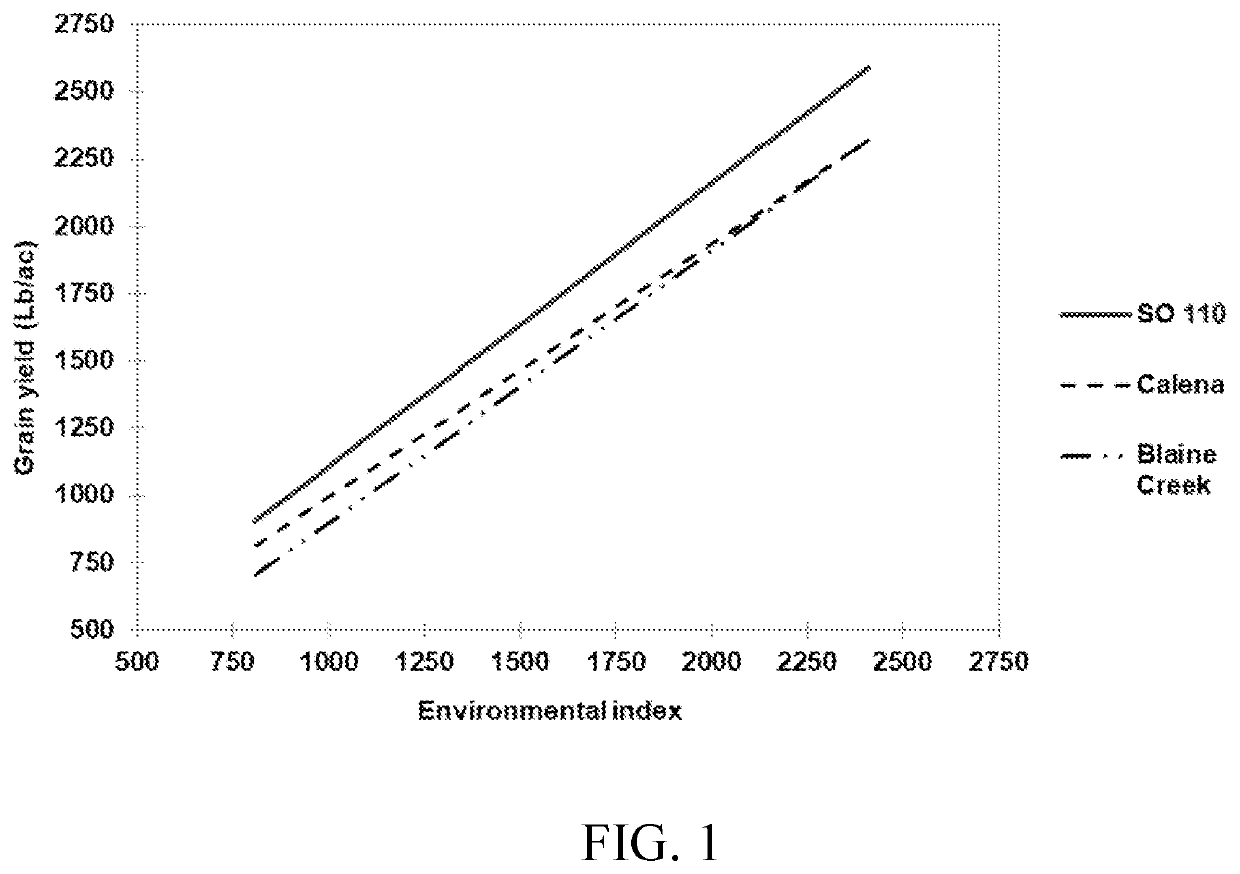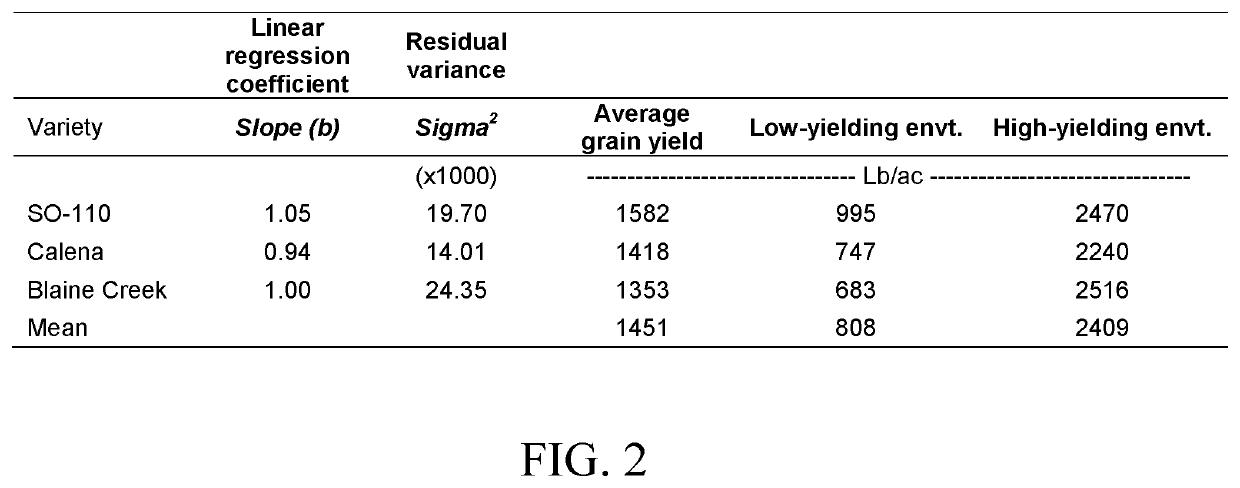Camelina sativa variety "so-110"
a technology of camelina sativa and so-110, which is applied in the field of camelina sativa variety " so-110 ", can solve the problems of limited number of varieties available for commercial production and little genetic improvement on this crop
- Summary
- Abstract
- Description
- Claims
- Application Information
AI Technical Summary
Benefits of technology
Problems solved by technology
Method used
Image
Examples
example 1
f Seed Quality Traits
[0095]The present invention is based on the development of true-bred camelina seeds with unique characteristics, including, for example, prolonged seed filling period, increased seed oil content, decreased test weight and an increased seed weight. Advantageously, in some embodiments, the unique characteristics include, and / or contribute to, increased oil and grain yields.
[0096]The oil content in the camelina seed was determined using contiguous wave low-resolution nuclear magnetic resonance (NMR) spectrometry at the Seed Lab at Oregon State University (Seed Science & Technology, Department of Crop and Soil Sciences, Oregon State University, Corvallis, Oreg., 97331).
Example 2—Agronomic Performance Field Evaluation of Camelina sativa (L.) SO-110
[0097]During the spring of 2010, 2011, and 2019, the performance of SO-110 was evaluated in representative areas within the Pacific Northwest and the Northern High Plains of the US including Oregon (Pendleton), Montana (Ams...
example 4
nt of SO-110
[0103]The present invention involves the development of true-bred camelina seeds capable of growing and providing adequate seed yields under high-input, low-input, and / or dryland conditions in North America, and having but not being limited to the following characteristics compared to other popular camelina varieties:[0104](i) a lower test weight of about, e.g., 50.0 Lb / Bu (range of 46.0 to 51.8 Lb / Bu);[0105](ii) a medium flowering period of about, e.g., 62 DAP (range of 42.5 to 85 DAP);[0106](iii) a medium seed filling period of about, e.g., 33 days (range of 27 to 40 DAP);[0107](iv) a medium plant height of about, e.g., 32 inches, or 81.3 cm (range of 26 to 40 inches (66 to 102 cm));[0108](v) a medium to high seed oil content of about, e.g., 36.2% (range of 29.8 to 43.5%);[0109](vi) a high seed weight of about, e.g., 1.38 g / 1,000 seeds (range of 1.05 to 1.59);[0110](vii) a high oil yield of about, e.g., 573 lb / ac (range of 303 to 954 lb / ac); and[0111](viii) a high grai...
PUM
 Login to View More
Login to View More Abstract
Description
Claims
Application Information
 Login to View More
Login to View More - R&D
- Intellectual Property
- Life Sciences
- Materials
- Tech Scout
- Unparalleled Data Quality
- Higher Quality Content
- 60% Fewer Hallucinations
Browse by: Latest US Patents, China's latest patents, Technical Efficacy Thesaurus, Application Domain, Technology Topic, Popular Technical Reports.
© 2025 PatSnap. All rights reserved.Legal|Privacy policy|Modern Slavery Act Transparency Statement|Sitemap|About US| Contact US: help@patsnap.com


